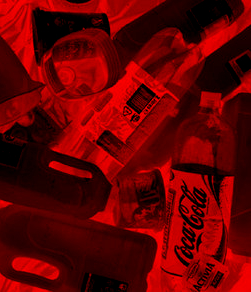Plastic risk outlined
 Experts say too little is known, and done, to tackle rising risks of plastic waste in oceans.
Experts say too little is known, and done, to tackle rising risks of plastic waste in oceans.
As millions of tonnes a year of microplastic waste mounts in marine environments, Flinders University scientists warn the ramifications to wildlife, food webs and human health are still little understood.
An Environmental Pollution review of how plastic waste and their associated chemicals impact marine food webs warns the impact of this “omnipresent contamination” of marine environments is “not well understood”.
It can take hundreds of years for plastics to degrade, with synthetic byproducts breaking into ever smaller particles through hydrolysis of hydrocarbons by microbes and exposure to environmental conditions.
These plastics of various sizes pose a substantial risk to life forms right down the food web, says Flinders University College of Science and Engineering PhD candidate Elise Tuuri, from the Plankton and Marine Microbiology Lab at Flinders.
“This study highlights the complexity of microplastics as a pollutant and how this can lead to difficulties in determining accurate impacts to human health and local marine environments,” she says.
“We know that large plastic debris can directly result in the death of larger marine organisms, through entanglement, strangulation, choking and starvation through ingestion, while smaller organisms can filter the water and ingest smaller plastic debris.
“As well, from laboratory-based studies we know this affects sea animals’ feeding behaviour and reproductive outputs and can cause developmental anomalies, changes in gene expression, tissue inflammation and the inhibition of growth and development to both adults and their offspring.
“However, the impact of micro- and nano-plastics to marine organisms in the environment are still relatively poorly understood and are considered a hidden threat.”
Plastic is a complex contaminant due to the diversity in sizes, shapes, polymer compositions and chemical additives which also could variously impact specific marine species.
The researchers call for more research into plastic contamination and synthetic additives to understand and prevent further potential environmental and biological health problems.
“Marine microbes dictate the flow of energy and nutrients but we do not know how plastics and their associated leachates affect microbial life at the base of the marine food chain,” says co-author Professor Sophie Leterme, from the ARC ITTC for Biofilm Research and Innovation at Flinders University.
“Studies have found that plastic pollution has a direct impact on bacterial growth, protein production, the acquisition effect of major primary producers phosphorous and nitrogen-fixing rates, photosynthesis and genome wide changes, so we need to understand what chemical additives do to macrophytes, phytoplankton, zooplankton and microbes in the sea.”
Researchers tested the presence of additives (HBCD = 1,2,5,6,9,10-hexabromocyclododecane, DEHP = Dioctyl-phthalate), and polymer type (PE = polyethylene, PP = polypropylene, PVC = poly-vinyl chloride, PS = polystyrene) in a range of marine microbes and phytoplankton and found reduced growth and photosynthesis in most of the samples. High concentrations of microplastics were also found in suspension and filter feeders such as oysters which readily ingest plastic particles.
While the negative consequences of plastic litter have been shown in laboratory tests, the impact of plastics on environmental communities is less researched and concentrations present in the marine environment need to be understood to accurately evaluate the effect on vital food webs and possible implications for human health, the article concludes.








 Print
Print